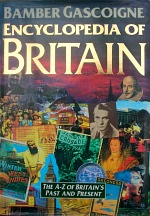| |

More than 5000 entries on the history, culture and life of Britain (published in 1993 by Macmillan, now out of print)
|
Windsor
|
|
|
(30,000 in 1991)
Town on the south bank of the Thames in Berkshire. It has grown up below Windsor Castle, a royal stronghold on a chalk bluff above the river. There was an Anglo-Saxon fort here, and *William the Conqueror built his keep on the site of the central feature of today's castle, the Round Tower; replaced and altered by successive monarchs, the tower acquired its present appearance in the early 19C at the hands of *Wyatville. Windsor has remained since Norman times an important royal residence. Its most distinguished architectural feature is *St George's Chapel; nearby is the contemporary but much restored *Albert Memorial Chapel.
|
|
|
|
|
Most of the State Apartments were either created or remodelled by Wyatville in the early 19C. His most spectacular room is the Waterloo Chamber, a banqueting hall created by roofing over a courtyard; commissioned by *George IV to celebrate the defeat of *Napoleon, it contains portraits by Lawrence of the statesmen who between them carved up post-Napoleonic Europe. Among many great works of art in these apartments, a minor but irresistible treasure is *Queen Mary's Dolls' House.
|
|
|
|
|
In 1992 parts of the castle were severely damaged by a fire which started in a chapel in the private apartments around noon on November 20. Several rooms were gutted, including St George's Hall – the castle's principal banqueting room until replaced by the Waterloo Chamber. Amazingly, nearly all the works of art were saved. The only major loss was an equestrian portrait of George III by William Beechey, too massive to move.
|
|
|
|
|
Adjoining the castle is Windsor Home Park (265ha/655ac), which includes *Frogmore. Further to the south lie the 2150ha/5313ac of Windsor Great Park, originally a royal hunting ground and now much used for equestrian events. Deer are confined to the area around the Long Walk, a 4km/2.5m avenue running south from the castle; this was laid out in 1680 and has at its southern end a great equestrian statue of *George III, known familiarly as the Copper Horse, by *Westmacott (1831).
|
|
|
|